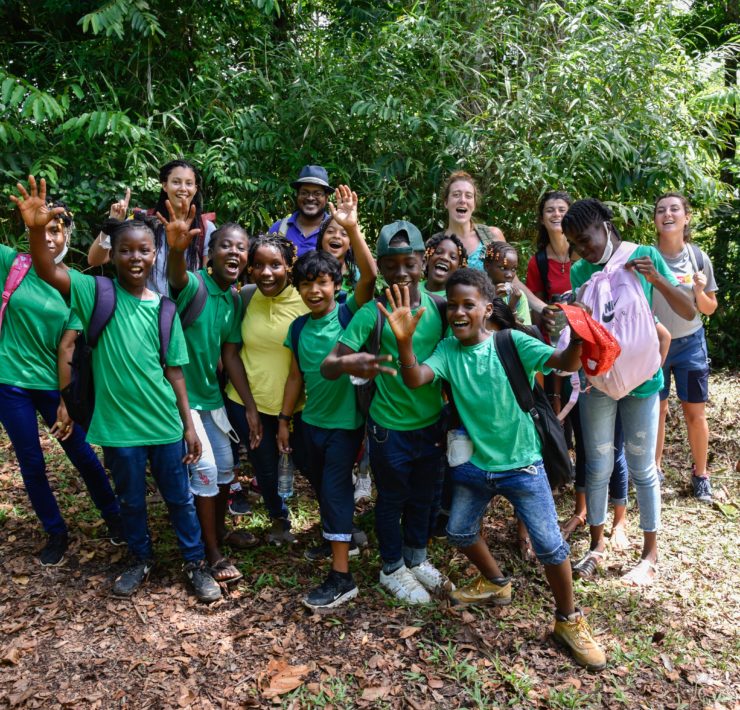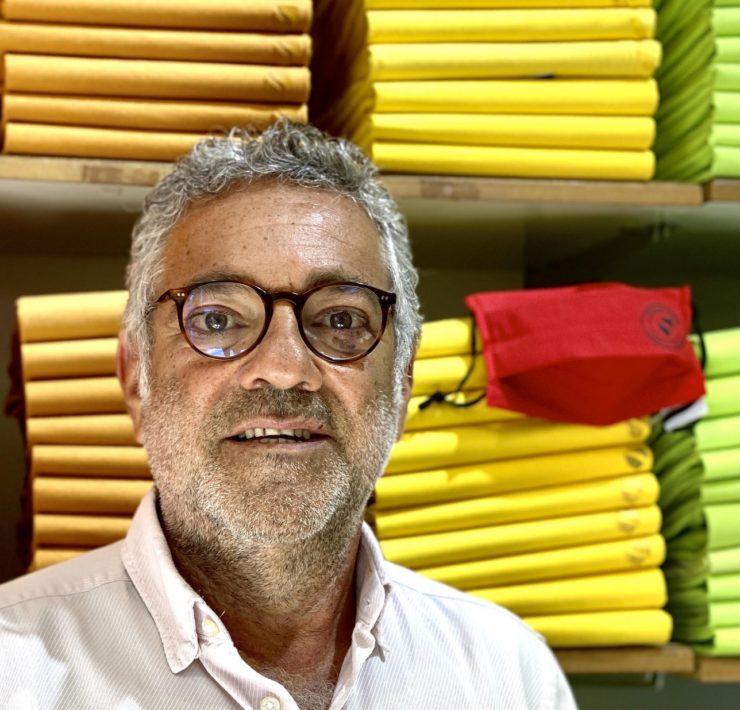
Between Caribbean, African, European and South American rhythms, Guyanese pianist and singer Saïna Manotte opens a musical door onto the world. In her first album “Ki moun mo sa”, she delivers Kréyol Pop, sometimes soft, sometimes dynamic, rich in words.
ONAIR: Saïna Manotte, you were performing at a concert on October 2nd at the New Morning, a great opportunity for your fans given the context …
Saïna Manotte: Indeed, this concert, strictly complying with social distancing, took place before the 2nd lockdown, just in time! The audience was thirsty for life and enthusiastic to be there. It is important for us artists to keep inspiring dreams, playing
music, allowing culture to live. In Guiana, the concert was supposed to be on December 11.
OA: You released your first album in full lockdown…
SM: It was a promise I made to those who follow me. An artist’s job is to create at any time: we must find ways to adapt. Today I do zoom interviews, I even participate in screen TV shows!
OA: In your opinion, is culture “of first necessity” and essential?
SM: Absolutely! Culture is necessary. It is a public service as Malraux used to say. I am campaigning for it. Also, contact is important. For a society to be united, everyone must be able to come together, at the movie theatre, at shows, at plays …

OA: Did you grow up with this streak?
SM: My mother is very sensitive to Art. She opened the doors to Art for me. We used to go see plays almost every weekend and we had a subscription to the city’s theatre. I mostly danced at family celebrations. A “drumbeat” would go off and I would start dancing! (laughter). The love of words has also accompanied me through the years.
My mother gave me the keys to go further artistically.
OA: Have you been dancing, playing and singing since
you were little?
SM: I started at a very young age. My parents felt my desire to express myself. They enrolled me in organ school in Guiana and with the choir at about 4 or 5 and up to about 16 or 17. Then I got a master’s degree in Musicology from a university near Paris. I slowly turned to piano.
As for dancing, I practiced traditional dance, classical dance and modern jazz. I started at the age of 3 with body awareness classes, and never stopped, up to the Evry Conservatory. I attended a professional course in contemporary dance alongside musicology.

OA: Did you want to dance as a career?
SM: I have a Diploma in Choreographic Studies (DEC) but the goal was not so much to make it my job. I am quite a perfectionist and above all I love to learn. It was in line with my dancing career…
OA : About singing, when did it start to be a profession?
SM : When I arrived in France, I started to write poems and texts about Guiana and family. This is how I started to express my homesickness. After studying musicology, I taught at a middle-school. My friends and family encouraged me and invited me to share my productions. My husband (editor’s note: Maxime Manot ’, also musician and singer) put them on the internet and it all started. He already wanted to do it for a living. It was meeting him that allowed me, in turn, to be discovered by the public.
OA: How do you work together?
SM: We bring a lot to each other. We both grow with the other’s proposals. I write in Creole because I am quite attached to traditional sounds. He adds value to my songs, an opening to the world. In return, I bring him some cayenne pepper (laughter).
Technically, he’s with me in the studio. I compose all my songs with him. We have this chance to mix private and professional lives and we make it a plus.
OA: We heard you do everything, absolutely everything?
SM: (laughter) Yes, I work from A to Z: writing, composing, performing and even arrangements! I’m everywhere, right down to the clips where I want to contribute with ideas, not just choreography. I want whoever watches my clips to travel throughout Guyanese culture.

OA: In « Ki moun mo sa » you look very committed…
SM: Yes, I am a feminist and committed. And I am in favor of promoting everybody’s culture. I want people from Britany to be proud of their culture. I don’t want a smooth society that denies differences; we can love the other even if we are different. I have seen Chinese people in my audience, learning Creole through my songs. You can reach out to others while remaining who you are. This is my wish for France, which has a lot to learn from its overseas territories…
OA: What does Guiana have to teach for example?
SM: I lived in Saint-Laurent du Maroni for a few years and I know the native populations there. Guiana, for example, can serve as an example of peaceful cohabitation… And not only: The crisis has highlighted cross-border issues. We must take them head on, in Guiana, as elsewhere, respecting others in what they are and in what they have to bring, humanly and culturally. Everyone carries wealth within them. This is what my music is about.
Propos recueillis par Agnès Monlouis-Félicité
DISCOGRAPHY
Saïna Manotte sings her first title Ti Péyi-a as “a cry in the night”, warmly received by the Guyanese audience. In “San To” and “
Demain peut être meilleur” (“Tomorrow may be better”), she sounded the alarm about the territory’s situation a few months
before the events of March 2017. Since then, the artist has held musical sessions on social networks thanks to her original
proposals, such as the “kréyol medley”, a tribute to the songs from her childhood, in duet with Lova Jah. The performance has
been viewed hundreds of thousands of times on her Facebook page. Her first EP (Extended play, longer than the single): “Poupée
Kréyol” released in March 2017, and “Poupée Kréyol II” released in 2018, are odes to her femininity and Creole touch. One concert
after another, Saïna Manotte strengthens the bond forged with the Caribbean public. “Ki moun mo sa” is her first album. She is a
true lyricist and the titles in this album suggest questions: “Who am I in my femininity? Who am I in my creolity? “.
She plays a resolutely “Kréyol” Pop also bearing the colors of French music, as well as African and South American rhythms.
CONTACT
Facebook
www.facebook.com/saina.artist
Instagram
www.instagram.com/sainamanotte/
YouTube
www.youtube.com/SainaMANOTTE
Mail
saina_manotte@hotmail.fr




